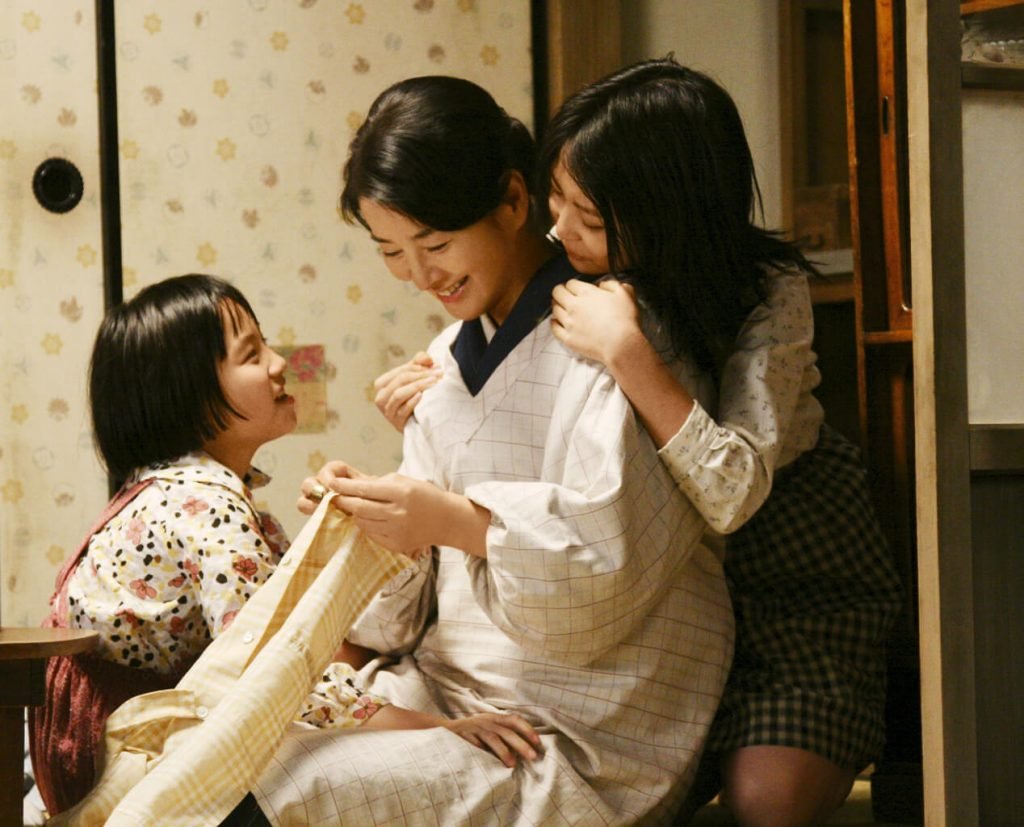Japan has adopted many ideas from other countries throughout its history, including technologies, customs, and forms of cultural expression. It has developed its unique culture while integrating these imports. Today’s Japanese lifestyle is a mixture of Asian-influenced traditional culture and western-influenced modern culture.
TRADITIONAL CULTURE
Traditional performing arts that are still cultivated in Japan today include: Kabuki, Noh, Kyogen and Bunraku. Noh, Kabuki and Bunraku are recognized by UNESCO as intangible cultural heritage.
Kabuki is a form of classical theater that developed at the beginning of the seventeenth century. It is characterized by the rhythm of the verses declared by the actor, extravagant costumes, an elaborate make-up (Kumadori) and the use of mechanical devices for special effects on the stage. The makeup accentuates the personality and mood of the characters. Most of the pieces deal with medieval themes or those of the Edo period; all roles, including women’s roles, are played by men.
 A scene from the Noh play Dojoji. (Kin-no-Hoshi, Watanabe Shashinjo) |
Noh is the oldest form of musical theater in Japan. The story is expressed not only through dialogues, but also through Utai (chants), Hayashi (musical accompaniment) and dance. Another feature is that the main character, dressed in a splendid embroidered silk costume, usually wears a lacquered wooden mask. There are masks for characters such as old men, young or old women, deities, ghosts or little boys.
Kyogen is a form of classic comic theater that is performed using highly stylized actions and verses. It is usually shown between the Noh pieces, but nowadays it is sometimes shown alone.
Bunraku, which became popular towards the end of the seventeenth century, is a form of puppet theater that is performed with the shamisen (a three-stringed plucked instrument) singing and music. Bunraku is considered one of the most stylized forms of puppet theater in the world.
 Sado or Chado, a traditional way of preparing and serving tea. (JNTO) |
Other traditional arts such as tea ceremony and ikebana are part of everyday life for people in Japan. The tea ceremony (sado or chado) is a highly structured way of preparing green tea. However, sado is much more than just the ritual preparation and presentation of tea. Rather, it is a total work of art that requires a broad spectrum of knowledge and a pronounced sensitivity. Sado is also an expression of the search for the meaning of life and leads to the worship of nature.
 Ikebana or Ikenobo-style flowers. |
Japanese floral art (ikebana), which developed over seven centuries, has its origins in flowers that were offered as early Buddhist offerings. This art originated from the purely decorative use of flowers, in which the utmost care was taken in the selection of all elements: the plants, the vase, the arrangement of each branch and flower and the relationship of the branches to the vase and the surroundings.
MODERN CULTURE
Classical music, which has many fans here, came to Japan from the West; Concerts are held all over the country. Japan has also produced many conductors, such as Ozawa Seiji, as well as pianists and violinists who perform worldwide.
Since Kurosawa Akira won the Golden Lion at the Venice Film Festival in 1951, Japanese film has enjoyed worldwide attention. The works of great directors such as Mizoguchi Kenji and Ozu Yasujiro received high praise. In 1997 Kitano Takeshi won the Golden Lion in Venice with HANA-BI and in 2003 with Zatoichi the prize for best director. "Okuribito" (NOKAN – The Art of Ending) was awarded the Oscar for the best foreign language film at the 2009 Academy Awards.
Japanese anime (cartoon films) that have been entertaining Japanese children since the 1960s are now exported all over the world, and include series such as Astro Boy, Doraemon, Sailor Moon, and Dragonball Z. today to the darlings of children worldwide. In 2003, the film Spirited Away in Miyazaki Hayao was awarded the Oscar for the best cartoon.
In the field of literature, Kawabata Yasunari and Oe Kenzaburo were awarded the Nobel Prize, while the works of other modern authors such as Murakami Haruki and Yoshimoto Banana are popular with young people in Japan and are translated into many languages.
RELATED ITEMS
-

Schools – kids web japan – web japan
The Japanese education system consists of primary school (6 years), middle school (3 years), high school (3 years) and university (4 years). compulsory school attendance…
-

Parenting in Japan: Why do Japanese people listen to their parents so much??
A unique upbringing of children applies in Japan. Parents compare their child to a plant that needs to be watered, fertilized and pruned…
-

Social psychologist Philip Zimbardo was an appraiser in the war trial that followed the events in Abu Ghraib. In his investigation…
-

The children’s world is part of me ″, culture, dw
Ali Benkirane’s Moroccan production Amal can also be seen at the Frankfurt children’s film festival LUCAS. The director speaks in the DW WORLD interview…
